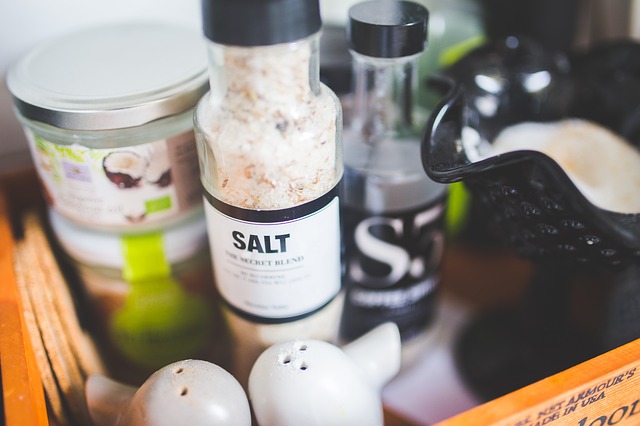
June 1, 2016 | The Hill
By Former Sens. Bill Frist (R-Tenn.) and Tom Harkin (D-Iowa)
Imagine saving 100,000 lives a year—preventing a plane crash each day—just by removing a half teaspoon of salt a day from the foods we eat. That is the magnitude of the opportunity before us. Today the Food and Drug Administration (FDA) issued a draft guidance to the processed food, restaurant and food service industries, calling for reduced sodium in our food usually consumed as salt.
Excess salt in our foods increases our risk of hypertension, leading to heart attacks and strokes. Moreover, high blood pressure leads to chronic kidney disease and is often associated with diabetes and obesity. The National Academy of Medicine (NAM) estimates that reducing our salt intake by that half teaspoon could prevent 100,000 deaths a year.
But individual Americans can’t do this on their own. Each day we consume an average one and a half teaspoons of salt: Think 12 of those salt packages in the condiment tray at a restaurant. A whopping 75% of the sodium we consume—nine of those packages—comes from the processed foods and restaurant meals we buy! We can’t make a meaningful dent unless the food industry changes its practices.
The Dietary Guidelines for Americans (DGA) 2015–2020 recommends that we consume no more than about a teaspoon of salt a day. For those with hypertension and pre-hypertension, which accounts for about two-thirds of the U.S. adult population, the DGA says three-quarters of a teaspoon is healthier.
Many companies, such as Campbell Soup Company, General Mills, Nestlé, Mars, and Wal-Mart, have recognized the need to trim salt and have begun sodium reduction initiatives on their own over the last decade. Our entire population won’t benefit from these efforts, however, unless there is a level playing field for all companies. This means clearly defined benchmarks to measure progress and against which companies can be held accountable. The FDA guidance provides just that.
The FDA guidance also represents a common-sense compromise with what an expert panel of the NAM, then known as the Institute of Medicine, recommended in 2010. The Institute reviewed more than 40 years of voluntary efforts by industry and found them wanting. In fact, when you look at national health data on sodium consumption, you see a flat line for the last quarter of a century at the teaspoon and a half level. So, the Institute’s panel called for FDA to establishmandatory sodium reduction by the food industry, albeit done in a gradual, step-wise fashion that would allow companies time to reformulate their products, including for our taste for salt—learned by decades of industry salting—to change.
By issuing voluntary guidance with 10-year targets and 2-year targets, the FDA is giving the marketplace another opportunity to correct itself in a transparent and accountable fashion. It’s the kind of give-and-take compromise that we, as senators, tried to forge across the aisle.
Moreover, this national approach has powerful benefits for our local communities. For instance, the prevalence rate for hypertension in Des Moines is slightly above 31%, In Tennessee’s state capital, more than 145,000 Nashvillians are at risk for hypertension. All of our local public health initiatives to address these community disease burdens are ultimately limited by the reality of a national food supply. We can’t make the local progress we want and need without a comprehensive and systematic reduction of sodium in our foods.
Never has the old saw – an ounce (or in this case half a teaspoon) of prevention is worth a pound of cure – held more true. Reducing our daily sodium intake by just half a teaspoon has been estimated to provide health care cost savings between $10 and $24 billion annually. For our home states of Iowa and Tennessee, that amounts to $190 million and $400 million a year, respectively.
Finally, sodium reduction can help us address some of the most significant health disparities in our nation. African-American adults suffer significantly higher stroke mortality rates than other populations and have higher rates of hypertension. Overweight and obesity affect 3 out 4 Hispanic and African-American adults.
It has been six years since the Institute of Medicine called for action, and we have likely suffered 600,000 preventable deaths among our fellow citizens since then. Now is the time to take the FDA proposal and put it to work.
This op-ed originally appeared on The Hill.
Frist was a heart and lung transplant surgeon before being elected to the Senate in 1994 where he served as Majority Leader. Harkin was elected to the Senate in 1984 and served as chairman of the Senate Health, Education, Labor, and Pensions Committee.
NashvilleHealth creates a culture of health and wellbeing by serving as a convener to open dialogue, align resources and build smart strategic partnerships to create a bold plan for health and wellbeing in Nashville.
Check out our latest newsletter© Copyright 2025 NashvilleHealth

